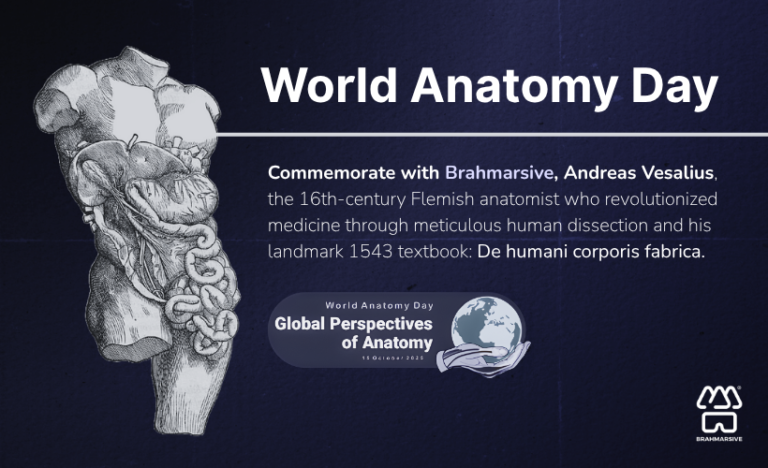For centuries, medical education has relied on the gold standard of cadaveric dissection to teach anatomy. The tactile experience, the unique variations, and the profound respect for the human form are undoubtedly valuable. However, in today’s rapidly evolving world, medical universities across the globe are grappling with a growing set of challenges: escalating costs, ethical considerations, logistical hurdles, and the imperative to deliver consistent, cutting-edge education.
Enter the digital cadaver – a revolutionary innovation that isn’t just a supplementary tool, but a strategic investment offering substantial long-term returns for educational institutions. At Brahmarsive Inc., we believe understanding this Return on Investment (ROI) is crucial for deans, HODs, and administrators looking to optimize resources and elevate their anatomy programs.
The Hidden Costs of Traditional Cadaver Labs
While the upfront cost of purchasing a cadaver is significant, it’s just the tip of the iceberg. The true financial burden lies in the ongoing expenses:
Procurement and Transportation: Sourcing and transporting cadavers can involve complex logistics and considerable fees. While direct purchase of a whole body cadaver can be between $2,000 – $3,000 in the US (Heizenrader), the “average cost per cadaver” for institutions in the US is cited to range from $10,000 to $20,000 due to high demand and limited availability. This higher figure likely encompasses comprehensive acquisition and initial logistical expenses. (Insights10). Even in 2011-2012, estimates for six to eight cadavers per class, plus humidor startup costs, could reach over $50,000. (NABT – An Economical Approach to Teaching Cadaver Anatomy)
Preservation and Storage: Maintaining cadavers requires specialized facilities, embalming fluids, ventilation systems, and trained personnel, all of which incur substantial recurring costs. Stainless steel humidors for storing bodies alone are reported to range from $4,000 to $8,000. (NABT – An Economical Approach to Teaching Cadaver Anatomy)
Disposal: The ethical and legal disposal of cadaveric remains is a carefully regulated and costly process.
Facility Maintenance: Cadaver labs demand strict climate control, specialized plumbing, and rigorous cleaning protocols to ensure safety and prevent decomposition, adding to operational expenses.
Limited Access and Reuse: Cadavers degrade over time and can only be used by a limited number of students within a specific timeframe, requiring continuous replenishment.
Furthermore, factors like the COVID-19 pandemic highlighted the vulnerability of traditional methods. An analysis of anatomy education during August–December 2020 showed that cadaver use decreased overall from 74.1% before the pandemic to 50.3% during the pandemic in the US and internationally. (PMC – An analysis of anatomy education before and during Covid‐19). This underscores the need for resilient and accessible alternatives.
The Digital Cadaver Advantage: A Smart Investment
Digital cadaver platforms, while requiring an initial investment in software licenses and potentially high-performance hardware, offer a compelling long-term cost-saving proposition and a host of educational benefits:
- Elimination of Recurring Cadaver Costs: This is the most direct and significant financial saving. By reducing or eliminating the need for physical cadavers, universities free up substantial funds previously allocated to procurement, preservation, and disposal.
- Reduced Facility Overheads: Digital platforms require less specialized infrastructure. The need for extensive ventilation, specialized storage, and chemical handling is drastically reduced, leading to lower utility bills and maintenance expenses.
- Scalability and Unlimited Use: A digital cadaver can be accessed by hundreds or thousands of students simultaneously, repeatedly, and without degradation. This means a single investment can serve countless learners over many years, unlike physical specimens.
- Enhanced Accessibility and Flexibility: Students can access the digital cadaver from anywhere, at any time, on various devices. This removes geographical barriers and offers unparalleled flexibility, particularly beneficial for institutions in remote areas or those with a large student body.
- Standardized Learning Experience: Unlike physical cadavers, which vary in quality and anatomical features, digital models provide a consistent and precise learning experience for every student. This standardization is particularly valuable for complex anatomical regions.
- Environmental and Ethical Responsibility: Digital cadavers offer a sustainable and ethically responsible alternative to traditional cadaver use, addressing concerns about body sourcing and environmental impact.
The Growing Market for Digital Anatomy Solutions
The global virtual human anatomy software market is on a rapid growth trajectory, underscoring the widespread recognition of its value. Valued at USD 0.33 billion in 2024, it is projected to reach USD 2.3 billion by 2033, exhibiting a Compound Annual Growth Rate (CAGR) of 24.2% from 2025 to 2033. (Business Research Insights – Virtual Human Anatomy Software Market Report) This robust growth is driven by the increasing adoption of digital technologies in medical education, rising demand for interactive learning tools, and the growing need for cost-effective and accessible anatomical learning resources.
Calculating Your University’s ROI
While the exact ROI will vary based on specific institutional needs and current expenditures, a simplified calculation can illustrate the potential:
ROI = (Monetary Benefits – Cost of Investment) / Cost of Investment * 100%
Consider:
- Monetary Benefits: Sum of annual savings from cadaver procurement, preservation, storage, disposal, and reduced facility maintenance over a defined period (e.g., 5-10 years).
- Cost of Investment: Initial software licenses, hardware upgrades (if needed), and implementation/training costs.
The long-term savings often far outweigh the initial outlay, making digital cadaver platforms a fiscally responsible decision that allows universities to reallocate resources to other critical areas of medical education and research.
Brahmarsive Inc.: Your Partner in Innovation
At Brahmarsive Inc., we are committed to providing cutting-edge digital cadaver platforms that empower medical universities to deliver superior anatomy education while achieving significant long-term cost efficiencies. Our solutions offer realistic, interactive, and customizable learning experiences that prepare students for the complexities of modern medicine.
Investing in a digital cadaver platform isn’t just about adopting new technology; it’s about making a strategic decision that secures the financial health and educational excellence of your institution for years to come.
Contact us today to explore how Brahmarsive Inc. can help your university realize the significant ROI of digital innovation.
.





